The final day at Burswood was just as enjoyable as day one. Well done to all the AUSOUG committee!
I started with two APEX talks – first, Scott Wesley on APEX 4.1 Security. Personally I very much enjoyed the unique presentation style. You can experience it for yourself here. After that, Mark Lancaster from Queensland gave his analysis of the changes from APEX 4.0 to 4.1, and commented on a number of new features that have been added or improved.
Just before lunch I caught “Tips and Best Practices for DBAs” by Francisco Munoz Alvarez, who spoke less about actual DBA tasks (as I was expecting) but more about the “soft” skills – attitude, professionalism, working in a team, delegating tasks, and automating everything.
After lunch Vinod Patel moderated a discussion panel comprising Debra Lilley, Tim Hall, Connor McDonald, Penny Cookson, Chris Muir, and a guy from Oracle (whose name escapes me for the moment) – and they were plied with many questions about the art of presenting. It was encouraging to hear what they had to say, both about their success and their failure stories. I think I got away with taking this photo without them noticing 🙂

I took in Graham Wood‘s final presentation, a live demo of Exadata. He demonstrated how blazingly fast it is for loading huge amounts of data in a very short time (e.g. 500GB in about 10 minutes IIRC) and running horrible queries even faster (e.g. multiple full table scans with self joins, running in mere seconds). It was very impressive, although it did highlight that to get the full benefit of Exadata, some queries may need to be rewritten. For example, a big report you’re running now might get a modest x10 or x20 speed improvement on Exadata, but after rewriting you could get on the order of x100 to x200 speed improvements! If you don’t believe me, go ask Graham yourself 🙂
The day ended with Connor McDonald‘s talk, A Year in Purgatory – Diary of an 11.2 RAC Upgrade. It held a lot of promise, but unfortunately I was called away to an emergency at work so I missed most of it. I was quite disappointed to miss that one. By the way, Connor is now blogging – at connormcdonald.wordpress.com. Finally!
I’ve enjoyed each AUSOUG conference since 2000, and this year was one of the best in my opinion. It was great to catch up with colleagues, network with Oracle nerds and professionals, and get inspired by a variety of talks on topics I’m interested in.
In addition, the last few years I’ve also presented. This has been a good experience which I intend to continue. I hope that with practice I’ll get much better at it.
Jeffrey Kemp
4 November 2011
AUSOUG /
I had a most enjoyable* day today at the Oracle conference at Burswood, Perth.
* This is significant in light of the fact that the start of the day was quite hectic, having had to drop the car off to get a new alternator (the electrics died on the way home from work yesterday, so this morning I called RAC out to get the car started and charge the battery up a bit. I managed to drive the car within 100m of Ultratune, then it died completely. So I left the car in the traffic and walked the rest of the way, borrowed some kind of block box that was like a CPR machine for cars.), thereafter going with Rosalie to drop the eldest at her school, so she could then gift me a lift to Burswood.
I got to the conference in time to hear Graham Wood from Oracle talk about DB Time-based Oracle Performance Tuning, which was excellent, then Tim Hall on Edition-Based Redefinition which led to some excellent discussions with both Tim and colleagues from my current client.
My talk on a simple ETL method using just SQL seemed to go well and there were some good questions, comments and suggestions. If you missed something it was probably because I talk too fast – if you want to look something up from the talk you can look at the slides here, or have a play with a full SQL*Plus demo [ETL-by-SQL-sqlplus-demo.zip]. I also blogged about this technique back in February.
I finished the day with Graham Wood’s second talk, on Oracle Hidden Features – which indeed included info on some Oracle features that I’d either not yet come across, or had forgotten about. Doug Burns blogged about this presentation earlier. The bit about external tables, especially the new 11g feature for running the source file through a preprocessor, was particularly interesting.
I’m looking forward to the second day tomorrow.
Jeffrey Kemp
3 November 2011
AUSOUG /
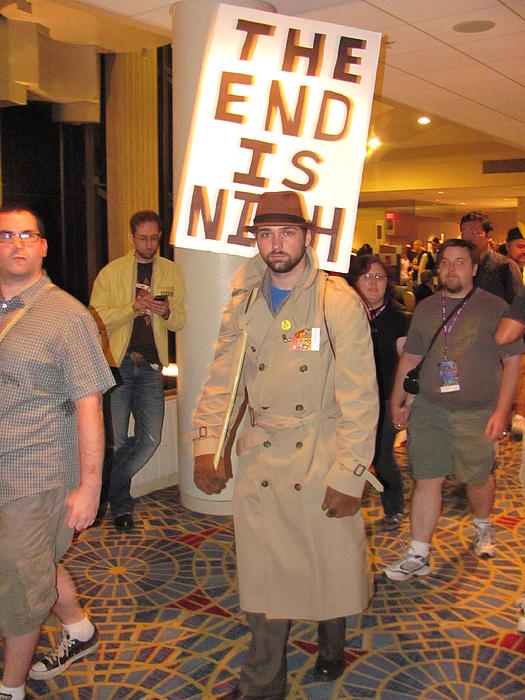 Just a quick note to draw attention to the lineup for AUSOUG National Conference – 3-4 November at the luxurious Burswood Resort here in Perth. The usual suspects will be there, for example:
Just a quick note to draw attention to the lineup for AUSOUG National Conference – 3-4 November at the luxurious Burswood Resort here in Perth. The usual suspects will be there, for example:
- Chris Muir on Angels
- Tim Hall on a potential Killer extension
- Scott Wesley with Deeper Discussions (on Apex Security)
- Penny Cookson helping Oracle devs and Java devs work happily together
- Connor McDonald on A Year In Purgatory
- and myself 🙂
Signs of the coming Apocalypse? Who knows….
Plan your trip (and arrange your accommodation early, if you need it) and your conference schedule today!
First off the mark this morning was Mark Lancaster on “Building Advanced APEX 4.0 UIs with Ext JS”, which was an eye-popping demo of some wonderful things you can do when you combine the power of Ext JS with Apex.
Tom Kyte presented via Webinar his “The Best Way – Things You Know” presentation, which I had already enjoyed in Melbourne but it’s always worth revisiting these things – helps to counter the constant wave of opposite sentiment from the other side of the spectrum.
Some years ago I had a quick look at REST, as an alternative to SOAP – but never really got the hang of it. So I was interested in being introduced properly by Chris Muir in his talk “A Change is as Good as a REST – JDeveloper 11g’s REST Web Services”. This double-length presentation was worth attending, he started with an excellent definition of web services, their history and REST’s heritage; explained the power and simplicity of REST, compared and contrasted it with its complex and comprehensive cousin, SOAP; and demonstrated how easy it is to create and expose simple REST web services using JDeveloper.
After lunch, we were entertained by Guy Harrison‘s keynote address, “Technology Trends that have the potential to make big impacts both in our everyday life and as Oracle professionals”. They had to close down all the other conference rooms just to make room for the presentation title in the programme 🙂 But it was a fun talk speculating about the kinds of technology our kids and our kids’ kids will probably be all blasé about.
Connor McDonald fired us all up with “A Better Way of Managing Optimizer Statistics”. He claims that we should stop collecting statistics and stop creating histograms 🙂 – I suspect a number of DBAs are now wondering why they wasted so much of their time (and so much server time) for so long…
I finished the day with Frank Bommarito‘s “Outlines, Profiles, and SQL Plan Baselines” which was a good introduction to the subject and for me was a good overview of some new features I haven’t used.
Jeffrey Kemp
23 November 2010
AUSOUG /
After a leisurely sleep-in (after a weekend away at the parents’-in-law farm) I made my way to Burswood for the first day of the AUSOUG Perth Conference 2010.
After Roland Slee’s keynote (“consolidate consolidate consolidate!”), I headed upstairs for Steven Feuerstein’s “Golden Rules for Developers” – webinar edition. Unfortunately due to technical issues it started late (no fault of Steven’s) but I think he got the important points across.
Following that was Penny Cookson with “Meet the CBO in Version 11g”. She explained a number of improvements in the Cost-Based Optimizer that came with 11g, including a detailed demonstration of adaptive cursor sharing.
After lunch I decided to take in a DBA session – Guy Harrison spoke about how Oracle runs on VMware, which had some very interesting info about the difference between Full Virtualisation, Paravirtualisation, and Hardware-Assisted Virtualisation. A lot of it went over my head but I got a slightly better picture of what’s going on when I run an OS in a VM, as well as how proper memory and CPU allocation can make a huge difference to the performance of Oracle in a virtual environment.
I lost count of how many great tips Scott Wesley gave in his “‘n’ Methods to Improve APEX Performance” presentation – but there were a lot of great ideas, many that are simple and easy to implement, which can make a big difference to the performance of your Apex applications.
It was great to see the level of interest in APEX Themes and Templates – if you’d like to look through the bits that I skipped over, feel free to download my presentation from here.
Jeffrey Kemp
22 November 2010
AUSOUG /
The draft programme is out for the AUSOUG National Conference 2010.
If you’ll be in Perth in November I recommend you register and attend – a number of excellent papers will be presented, some of which I had the privilege of hearing when I was in Melbourne – you’ll learn new things, relearn old things you’d forgotten, and meet some giants in the Oracle world who will have travelled great distances to get here.
Some highlights, in no particular order:
- Steven Feuerstein – “Golden Rules for Developers”
- Penny Cookson – “Meet the CBO in Version 11g”
- Guy Harrison – “Optimizing Oracle databases on VMware”
- Mogens Nørgaard – “Licensing – Tales from the Trenches and other thoughts on Oracle”
- Tom Kyte – “The Best Way”
- Frank Bommarito – “Outlines, Profiles and SQL Plan Baselines”
- Connor McDonald – “A Better Way of Managing Optimizer Statistics”
- Mark Lancaster – “Building Advanced APEX 4.0 UIs with ExtJS”
I’ll be presenting my “Apex Themes and Templates” paper, which I presented in Melbourne last month – however it will be updated with a few additional bits and pieces that I’ve learned since then.
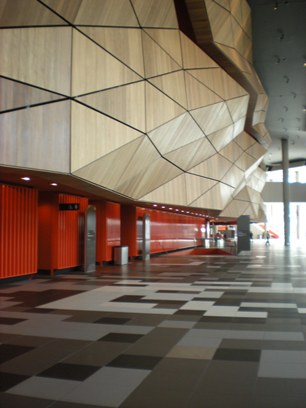 Another good day in Melbourne. Heard Richard Foote talk about Indexing New Features in Oracle 11g release 1 and 2. One thing he demonstrated was the creation of an index on only part of a table – normally I’d use a function-based index for this sort of thing, but his technique results in an index that is useful without adding strange predicates to all relevant queries in the application; it involves creating a globally partitioned index, in an UNUSABLE state, then rebuilding only selected partitions. This could be very useful for customers who have the partitioning option.
Another good day in Melbourne. Heard Richard Foote talk about Indexing New Features in Oracle 11g release 1 and 2. One thing he demonstrated was the creation of an index on only part of a table – normally I’d use a function-based index for this sort of thing, but his technique results in an index that is useful without adding strange predicates to all relevant queries in the application; it involves creating a globally partitioned index, in an UNUSABLE state, then rebuilding only selected partitions. This could be very useful for customers who have the partitioning option.
Of interest to me was Discovering the Power to Save the Planet, presented by Robin Eckermann (Smart Grid Australia) – having worked for a short time at Western Power, it was interesting to hear his perspective on the future of the generation and distribution of power. He compared the state of the art in power to broadband, as it was 15 years ago – and asserts that the smart grid will enable all sorts of new applications for customers to regulate their demand intelligently, and is essential for the coming wave of electric cars.
After that was Steven Feuerstein’s second talk, “Golden Rules for Developers“, which was well worth a good listen. I recommend you download and read the powerpoint if you missed it. If you take even just one of his recommendations (e.g. Don’t Repeat Anything, Don’t Take Shortcuts, Build On A Foundation, Don’t Code Alone), I think you will improve the quality of your code, reduce the cost of maintenance for your employer/client, and be much more satisfied with your work. I certainly intend to – I’ve been guilty of “starting from scratch” many times – I do carry around a portable hard drive with a large collection of bits and pieces I’ve collected along the way, but nothing I can just plug in and use with confidence. Steven also gave another PL/SQL talk at the end of the day, this time for DBAs, and that was interesting to me (as a developer). If you’re a DBA, but think that you have no need for PL/SQL, think again.
After that, during lunch, Steven announced the winners of the previous day’s quiz – and wouldn’t you know it, I won 🙂
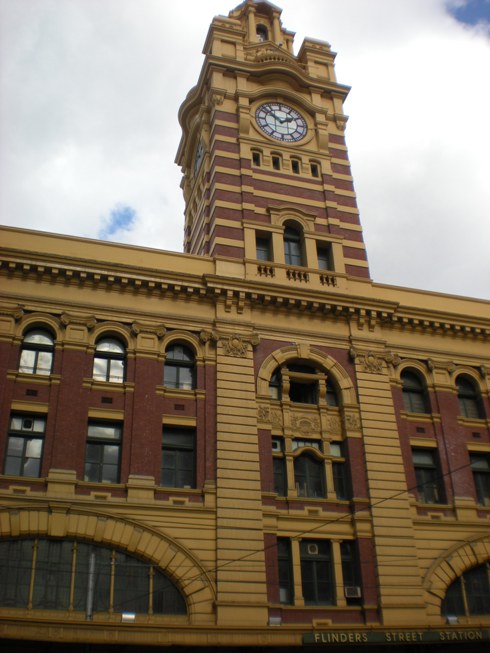

After a scrumptious breakfast at the Armoury I headed in what I believed was the general direction of the Melbourne Convention Centre – after making a wrong turn I eventually spotted a footbridge over the river that rung a bell from my GoogleEarthing; after taking some photos I was finally at InSync10.
The first session was Connor McDonald’s 11g Features for Developers, which was an eclectic mix of bits and pieces you won’t get from reading the New Features Guide or from Oracle Marketing, along with some gratuitous use of photos of his kids.
Steven Feuerstein didn’t present next, instead he made us think by running a Developer Quiz. Much like the PL/SQL Challenge (at which, by the way, you should sign up this instant if you haven’t already), it was fun and challenging, and I suspect everyone learned at least one new thing. Me, I learned what SUBSTR returns if the 2nd parameter (which normally starts at 1) is zero. As always, Steven was completely open to criticism, and with Connor and Tom in the room he certainly didn’t get off scot free 🙂

As it happened, I happened to disagree on one question, which was regarding the USING clause and how many bind variables must be supplied to a given statement. One of the responses (from memory) was that “you must always supply as many bind variables as there are placeholders”. I knew that if the statement being executed was SQL, the number of bind variables must match the number of placeholders, even if some of them have the same names (e.g. INSERT INTO emp VALUES (:a, :b, :a, :b) would require four bind variables). However, I also knew that if the statement is a PL/SQL block, each unique placeholder requires a different bind variable – if the placeholder appears more than once in the block, you don’t repeat the bind variable in the USING clause. I therefore ticked this answer as “correct” – if, for example, the block was BEGIN call_something(:a, :b, :a, :b); END;, you would have to provide two bind variables, because that is how many distinct placeholders there are in the block.
There was some discussion about this, because the answer was marked incorrect – according to Steven the number of placeholders in the block above is four, not two – and I agree that the meaning of a “placeholder” is different to a “bind variable”, although I usually speak as if to conflate the two ideas. However, I still hold to the opinion that a “placeholder” in the context of a PL/SQL block is a reference to this: :a, and I would say that the one placeholder :a appears twice in the PL/SQL block. I believe I have the documentation to back me up:
If the dynamic statement represents a PL/SQL block, the rules for duplicate placeholders are different. Each unique placeholder maps to a single item in the USING clause. If the same placeholder appears two or more times, all references to that name correspond to one bind argument in the USING clause. In Example 7-7, all references to the placeholder x are associated with the first bind argument a, and the second unique placeholder y is associated with the second bind argument b.
(emphasis added) Source: Using Duplicate Placeholders with Dynamic SQL
This is really just an argument over semantics, so no big deal. Some of the other questions had much more interesting discussion, so it was well worth attending. If you’re in Perth on Friday, Steven is running it again (I won’t be able to attend, unfortunately). I presume he will be using different questions…
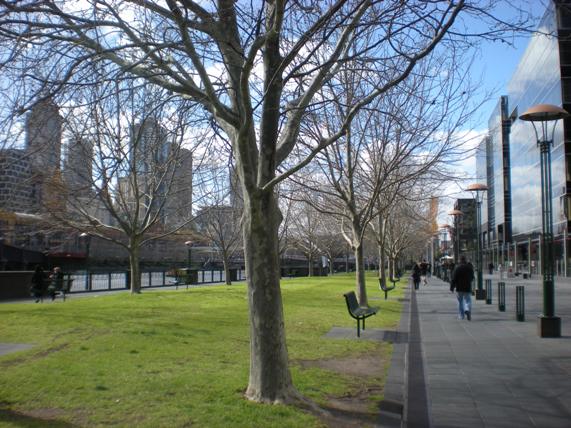
After that I went for a walk through Melbourne, since it was sunny outside. The climate in Melbourne, I discovered, is a tad different to Perth. Wandering along the riverside, I ended up experiencing a blast of all four seasons within the space of an hour – a lovely spring breeze, a somewhat warmish summer, then a cold blustering windy autumn (a bit out of order that) – there was a few seconds where it was difficult to remain upright – followed by a sudden rainstorm. I managed to find shelter under one of the many bridges that cross the river, waited for about ten minutes, then was able to walk back to the centre without getting any wetter. In fact, by the time I got back to the convention centre it was sunny again.

After a light lunch it was my turn to talk, and I think my presentation on APEX Themes and Templates went quite well. I appreciated the comments and questions that came back, and had some further discussion with a few people afterward as well, which was good.
I forwent Connor’s excellent Partitioning presentation which I’ve heard before, instead heard Kyle Hayle – Database Performance Made Easy – demonstrate the virtues of database tuning using a tool such as the one he’s produced at Embarcadero. I haven’t made use of many graphical tuning tools before, preferring just “the numbers”, but Kyle made an excellent case for the use of pictures instead of words for not only visualising the workload on the database (such as presented by Oracle’s Enterprise Manager, which Kyle had a hand in), but also for visualising the structure of a query. Personally, I’ve grown accustomed to using the traditional explain plan and I suspect I’ll probably continue to, but the Embarcadero product does have some features that automate some of the work I’d normally do by hand (such as examining the constraints on the tables and obtaining filter percentages).
Last of all, Tom Kyte presented The Best Way, in which he laid to rest for once and for all the answer to the age-old (and oft-repeated) question, “what is The Best Way to …?”. Finally, we can stop arguing over which way is worthy of being called Best Practice, and get on with the job 😉

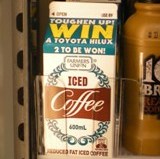 Went out for a nice dinner at a small japanese restaurant, which had a great cozy atmosphere, and on the way back to the hotel was surprised by these great explosions of flame from these pillars. I could feel the heat from hundreds of meters away. At the end, a quick stop at a store allowed me to procure what I’d been coveting all day: Farmer’s Union Iced Coffee.
Went out for a nice dinner at a small japanese restaurant, which had a great cozy atmosphere, and on the way back to the hotel was surprised by these great explosions of flame from these pillars. I could feel the heat from hundreds of meters away. At the end, a quick stop at a store allowed me to procure what I’d been coveting all day: Farmer’s Union Iced Coffee.
Perhaps you were introduced to APEX in a similar way to me.
When I started using APEX, I was pleased to see a good selection of simple themes and templates I could use straight away. There was no need to worry about creating a consistent look-and-feel across my applications, I could dive right into building the features and quickly produce good-looking prototypes and finished products very quickly.
As I became familiar with the product, I soon started exploring those sections in Shared Components entitled “Themes” and “Templates”. They looked intimidating at first, but as I fiddled with them I soon learned their usefulness and power – and soon was able to customise the look and feel of my web sites, so that they no longer looked so generic and “APEX-ey”.

I’ll be speaking on APEX Themes and Templates at the InSync 2010 conference in Melbourne, 16-17 August. This will be my first time speaking away from my home base in Perth.
The draft program has been published, and it looks like it will be huge. Over 130 presentations are already scheduled, my primary interest being the “Developer” and “Database and Technology” streams, which include the following:
- Meet the CBO in Version 11g (Penny Cookson)
- DEV Super Session: PL/SQL Developer Quiz Thyself (Steven Feuerstein)
- Indexing New Features in Oracle 11g Release 1 and Release 2 (Richard Foote)
- Oracle SQL High Performance Tuning (Guy Harrison)
- (Obscure) Tools of the Trade for Tuning Oracle SQLs (Tony Jambu)
- DBA Super Session: Reorganising Objects – when and how, and DEV Super Session: Things You Know (Tom Kyte)
- 11g Features for Developers, and Partitioning (Connor McDonald)
- DEV Super Session: Real Application Testing – I Love It (Mogens Norgaard)
…and that’s just some of the sessions I’m particularly interested in. Unfortunately I’m going to miss a number of them because they run concurrently – I’ll have some choices to make closer to the day.
Back on the topic of APEX, I’ve been playing with 4.0 in a VM, and comparing it with the previous version (3.2.1). Nothing really startling, but it’s interesting nonetheless to see how the themes and templates have been improved. Overall the new version looks quite good – I just need to find time to upgrade my “real” instances.
I hope to see you in Melbourne!
Got an email this morning from the Australian Oracle User Group that this year the AUSOUG/OAUG “Oracle with 20:20 Foresight” conference will be co-located with the InSync conference, which is held in Melbourne on 16-17 August.
Initially I thought, “what, no conference for Perth?” Thankfully, though, they will also hold Oracle with 20:20 Foresight in Perth as well, 22-23 November. Phew!













